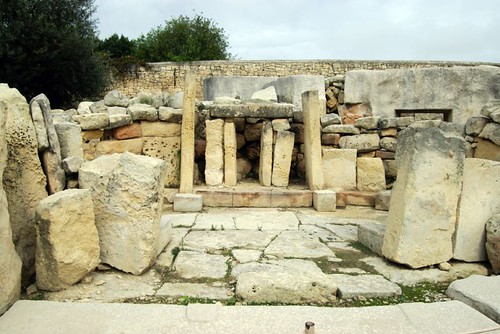Remember the story we reported about three months ago, about the Mayan pyramids being giant musical instruments? The idea seems to have struck a chord with experts based in Malta, who – either by design or jealousy – have heralded the acoustic talents of their own megalithic landmarks. The tiny Mediterranean island was once home to a highly developed civilisation, who between the fourth and third millennia BC created some of the world’s most striking ancient architecture. Listed as a UNESCOWorld Heritage Site, the huge temple complex is a majestic wonder which predates Stonehenge by up to a thousand years.
Yet Linda Eneix, President of the island’s Old Temples Study Foundation (OTSF), thinks there’s more to Malta’s megaliths than meets the eye. And she claims the Hal Saflieni Hypogeum, a dense complex of caves and chambers, holds the key. The hypogeum’s Science Officer Joseph Farrugia explains further: “There is a small niche in what we call The Oracle Chamber, and if someone with a deep voice speaks inside, the voice echoes all over the hypogeum. The resonance in the ancient temple is something exceptional. You can hear the voice rumbling all over.”
“Standing in the hypogeum is like being inside a giant bell,” adds Eneix. “You feel the sound in your bones as much as you hear it with your ears. Its really thrilling!” Research shows most Maltese temples resonate at a frequency of between 110 and 111 hertz. This has no small significance: UCLAscientists have shown how a resonance frequency of 111hz can have huge effects on the human mind, including a switch from the left to the right, more emotional side of the brain.
Architects have long seen Malta’s megaliths as the natural successor to cave-dwelling, and Eneix claims their resonances were specifically designed to mimic those of the island’s natural shelters. “Once you know what you are looking for, you can see these same ceiling curves in natural caves in Malta,” she says. “Its logical that the ancient temple builders observed the echoes and sound characteristics in the caves and came up with the idea of recreating the same environment in a more controlled way. Were they doing it intentionally to facilitate an altered state of consciousness? There is a lot that we are never going to know.”
Music has long been thought to have played a part in some of the ancient world’s most recognisable structures. The Oracle at Delphi is said to have spoken in guidance to Greek priestesses. Even Stonehenge, Britain’s most famous Stone Age monument, is claimed to have been an ancient concert hall.
